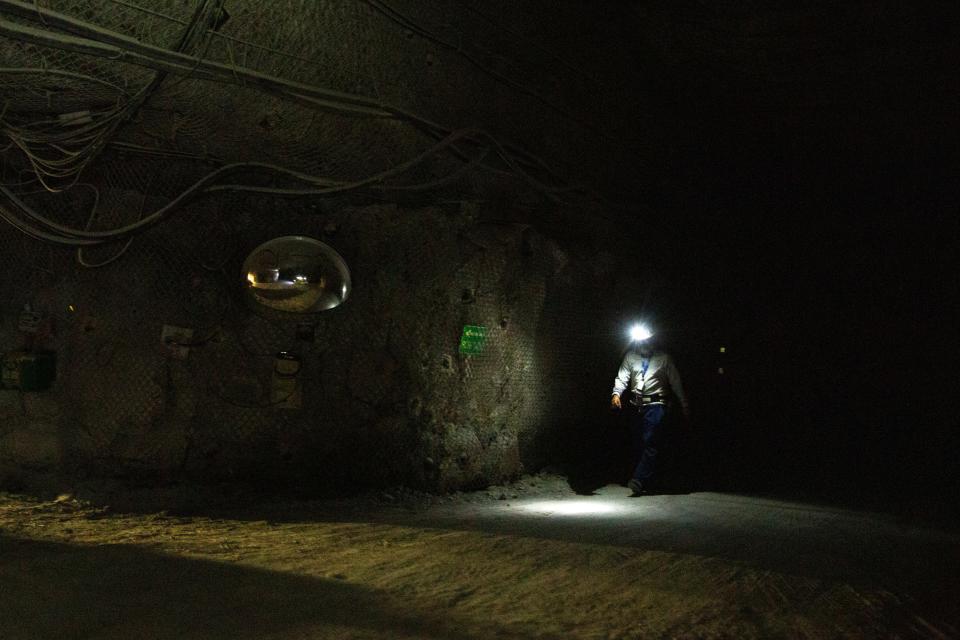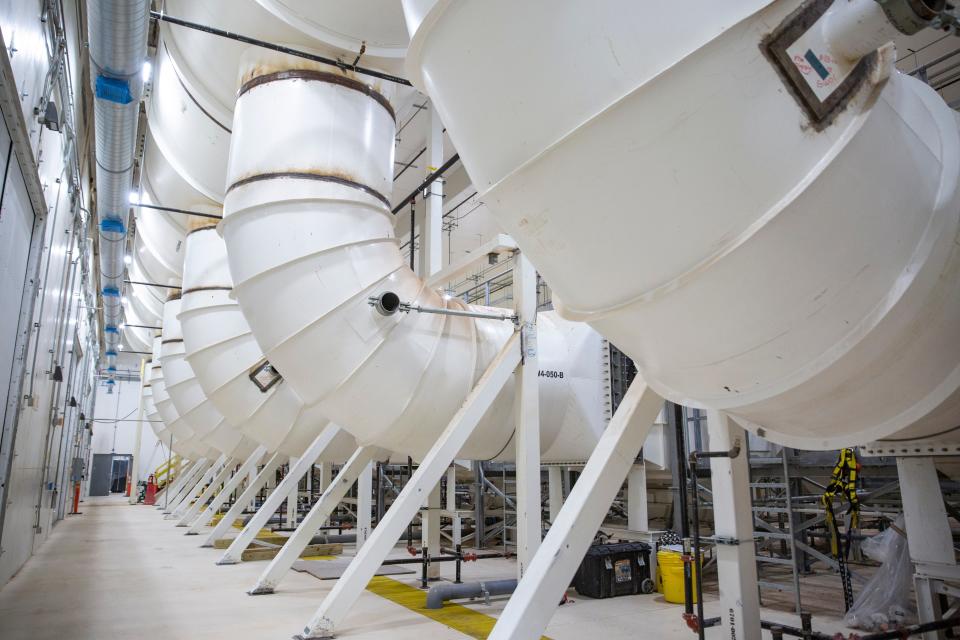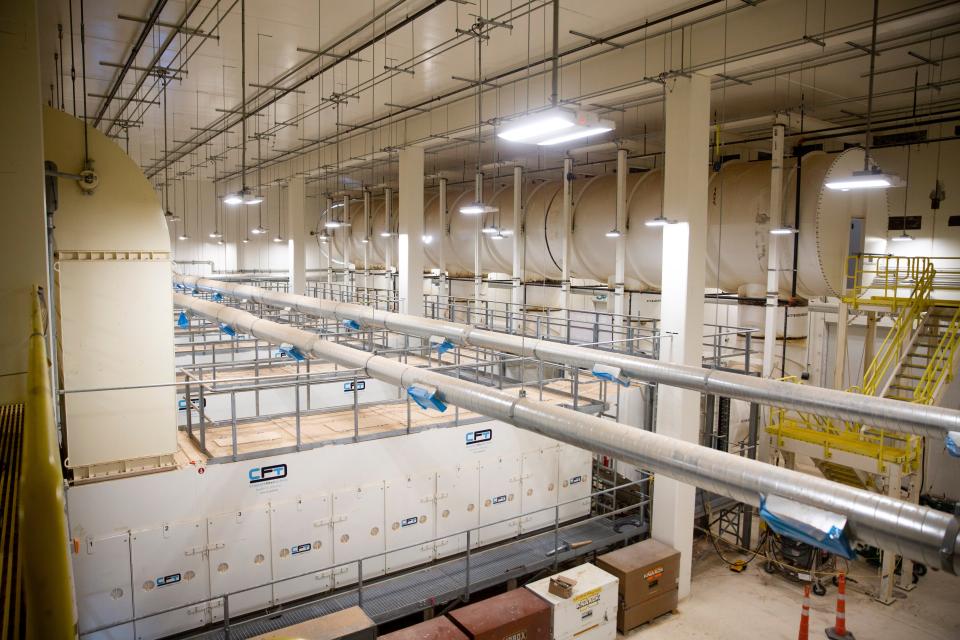Nuclear waste disposal permit issued for New Mexico site, WIPP to get bigger in November
A day after a permit for nuclear disposal in southeast New Mexico was issued, workers at the Waste Isolation Pilot Plant were ready to begin mining new space for the waste.
The New Mexico Environment Department on Oct. 4 issued a 10-year renewal of the operations permit for the Waste Isolation Pilot Plant after months of public input and mediation between the State of New Mexico and federal government.
The agencies signed a settlement agreement June 23, and issued a draft of the permit Aug. 15.
NMED Cabinet Secretary James Kenney said the new permit would protect New Mexico from risks associated with hosting the WIPP site, the U.S.' only underground repository for nuclear materials, amid national efforts to clean up the waste at facilities across the nation.
“The new permit will benefit New Mexico and legacy waste clean-up from around the U.S. for years to come,” Kenney said in a Thursday statement.

A day after the permit was issued, the Carlsbad Current-Argus was granted a tour of the WIPP facility, observing progress on capital projects and waste disposal since the last time reporters were granted access in 2021.
Here's what reporters learned on the tour.
More space for nuclear waste means more air needs in the underground
The renewal added language to permit allowing two new disposal panels to be mined into the underground salt formation where WIPP permanently buries waste about 2,000 feet underground.
More: Here's how much of Idaho's nuclear waste was disposed of in southeast New Mexico
Mining those areas can begin 30 days after the permit was issued on Nov. 3.
Ahead of the disposal panels themselves, work was already underway to mine access drifts that will connect them to the rest of the underground, and tie into a new utility shaft that will draw air into the mine.
That air will be exhausted in a 131-foot shaft after passing a series of fans and filtration buildings known as the Safety Significant Confinement Ventilation System (SSCVS), which WIPP officials said during a Thursday site tour was about 79 percent complete.
More: New Mexico's nuclear waste operations called into question during public forum in Carlsbad
Congress set a deadline of June 2026 to finish the project, which will more than triple available airflow in the underground, while lead contractor Salado Isolation Mining Contractors (SIMCO) plans to have it done a year earlier.
When operational, the SSCVS will provide about 540,000 cubic feet per minute (cfm) at full capacity, likely running at about 70,000 cfm during normal operations.
It includes 22 high efficiency particulate (HEPA) air filters, that will extract moisture and salt from the air brought through the mine, in a building known as the New Filter Building (NFB).

More: New nuclear waste rules stricter for Carlsbad area facility. Will New Mexico enforce?
By the time air reaches the Salt Reduction Building (SRB), there will be no contamination as demisters and de-dusters will pull moisture and other particulates out of the air.
In the event of a radiological release, the SRB will be shut down and air will go straight to the filters in the New Filter Building.
WIPP spokesman Bobby St. John said during the tour that airflow was crucial to the continued activity and increasing size of the mine.
Adding space does not expand WIPP's mission, officials say
More: Trinity Site downwinders call on US House to pass nuclear reparations for New Mexico
The two new panels will act as replacement space lost in 2014 during an accidental radiological release, as WIPP emplaces waste toward its limit of 6.2 million cubic feet under the Land Withdrawal Act (LWA).
But a bigger site needs more airflow, St. John said.
“You can see how much more space we’ve mined,” he said. “That’s why airflow is so important. Air is the lifeblood of the underground. It gives us the ability to do waste emplacement and mining.”
More: Feds ramp up project sending nuke weapons waste from South Carolina to site near Carlsbad
Each panel takes up to three years to fill, barring any incidents like in 2014.
That event led to a three-year shutdown and meant Panel 7 took more time to fill.
But the final panel permitted under the previous contract Panel 8 is about 21 percent full, with a room and a half of seven full, St. John said, and the next two will likely be ready about three months before they are needed.
More: Feds ramp up project sending nuke weapons waste from South Carolina to site near Carlsbad

Adding two more panels is not an expansion of WIPP’s mission to meet its volumetric limit, St. John said, but a means to ensure that mission is met.
“(The LWA) is based on volume,” he said. “It doesn’t say time or space, it says volume. We’re not expanding. What we’re doing is creating additional disposal space. It’s completing the mission we were given by Congress.”
Should that capacity be expanded, a mov that would take an act of Congress to amend the federal law, the new permit also contained language allowing the State of New Mexico to revoke it.
More: New Mexico lawmakers discuss nuclear impacts during meeting at Los Alamos National Lab
This was intended by the State to ensure WIPP is limited, thus limiting the risk to New Mexico.
At a Tuesday public meeting, Ryan Flynn with SIMCO said he was unsure how long it would take the facility to meet the limit, with some estimates shifting the closure date out as late as 2080.
“Focusing on the time in terms of the life of the facility, is really the wrong the focus. We have a volumetric capacity under the LWA. Our mission is to continue to operate safely until we reach that limit,” he said when questioned about WIPP’s likely lifespan.
“The life of our facility is established under the volumetric capacity under the LWA. I can’t really say how long it will take to achieve that mission.”
Adrian Hedden can be reached at 575-628-5516, achedden@currentargus.com or @AdrianHedden on X, formerly known as Twitter.
This article originally appeared on Carlsbad Current-Argus: More space to be mined at WIPP for nuclear waste disposal in November

